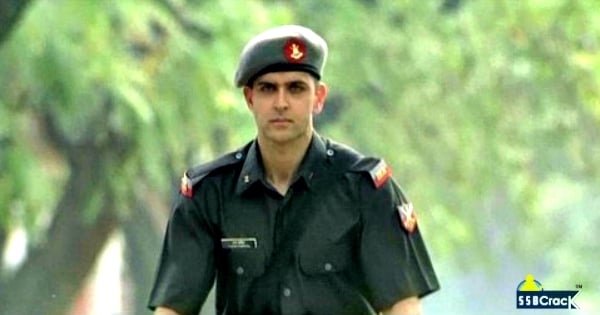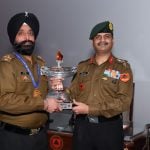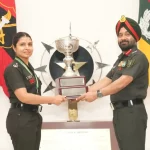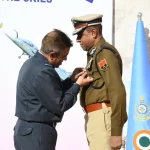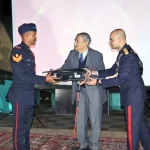Hello, Warriors! If you are a die hard aspirant of Indian Military Academy and if a series of shock wave passes through your spine whenever you read somewhere IMA or Indian Army being mentioned and if fills you with the josh & courage to be a part of it, then this article is for you.
Here, I jot some important points about the Indian Military Academy that every aspirant must know:
- IMA Indian Military Academy was established on 1st October in 1932 and is headed by Lieutenant General Manvendra Singh, AVSM, VSM as the present commandant and it’s motto is ‘Valor and Wisdom’.
- A trainee on admission to the IMA is referred to as a Gentleman Cadet or GC. One reason for this is that the academy expects its graduates to uphold the highest moral and ethical values.
- The IMA colours are steel grey and blood red. Steel grey represents the strength of steel in the GCs and blood red indicates the ultimate sacrifice for the protection of the motherland.
- The academy is located in the foothills of the Himalayas, about 8 km west of Dehradun in Uttarakhand. The academy area is 1,400 acres (5.7 km2).
- The Government of India transferred the erstwhile estate in Dehradun of the Indian Railway’s Railway Staff College, with its 206 acre campus and associated infrastructure, to the Indian Military Academy during Indian independence struggle.
- Brigadier L.P. Collins was appointed the first Commandant and the first batch of 40 GCs, began their training on 1 October 1932. The institute was inaugurated on 10 December 1932, at the end of the first term by Field Marshal Chetwode.
- In late 1947, the IMA was renamed the Armed Forces Academy and a new Joint Services Wing (JSW) was commissioned on 1 January 1949, while training of Army officers continued in the Military Wing. In 1960, the academy was renamed back to its founding name, as the Indian Military Academy.
- In 1976, the four battalions of the IMA were renamed the Cariappa Battalion, Thimayya Battalion, Manekshaw Battalion and Bhagat Battalion with two companies each in honour of Field Marshal Kodandera Madappa Cariappa, General Kodendera Subayya Thimayya, Field Marshal Sam Manekshaw and Lieutenant General Premindra Singh Bhagat, respectively.
- In 1977, the Army Cadet College (ACC) was moved from Pune to Dehradun as a wing of the IMA. In 2006, the ACC was merged into the IMA as its Siachen Battalion.
- The IMA Museum on the campus displays artifacts of historic importance. Among other war relics, it displays the pistol of Lieutenant General Amir Abdullah Khan Niazi of the Pakistan Army which he surrendered to Lieutenant General Jagjit Singh Aurora after signing the Instrument of Surrender to end the liberation War of 1971.
- The Commandant’s residence is a handsome colonial structure with a landscaped 6 acre garden. It offers a panoramic view of the Tons River silhouetted by the Himalayas.
- Developed in the 1970s, the South Campus of the IMA includes facilities for the Somnath Stadium and the Salaria Aquatic Centre. Other facilities on the South Campus include stables with a stud farm and a small arms shooting range.
- The IMA War Memorial, with its pillars and columns of Dholpur stone, pays homage to the alumni of the academy who have fallen in the course of action. At the sanctum sanctorum of the memorial is a bronze statue of a Gentleman Cadet with a sword presenting arms.
- Cadets undergo training at the IMA for one year. An exception are trainees selected via the Combined Defence Services Exam of UPSC. These cadets who are graduates of a non-military college undergo training for one and a half years.
- The Param Veer Chakra awardees of IMA are Major Somnath Sharma, Posthumous; Captain Gurbachan Singh Salaria, Posthumous; Lieutenant Colonel Hoshiar Singh; 2nd Lieutenant Arun Khetarpal, Posthumous; Captain Vikram Batra, Posthumous and Captain Manoj Kumar Pandey, Posthumous.
- Making of a Warrior, a documentary by Dipti Bhalla and Kunal Verma, provides an inside look at the IMA’s culture, traditions and training regime. The 2004 Bollywood film Lakshya is partly shot in IMA.
At last let me leave you with the academy’s credo excerpted from the speech of Field Marshal Chetwode at the inauguration of the academy in 1932:
The safety, honour and welfare of your country come first, always and every time.
The honour, welfare and comfort of the men you command come next.
Your own ease, comfort and safety come last, always and every time!

